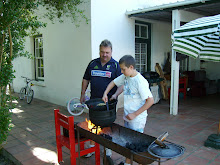A school needs to create a character or ethos of its own in order for the learners to identify with the school. These characteristics should be positive and inclusive for growth and traditions of excellence to be established.
Lovedale (1824) in the Eastern Cape was a non-racial school which started with 11 black and 9 white children. It was a training institution where book learning and practical application (apprenticeship) went hand in hand. The first Xhosa dictionary was compiled at Lovedale.
It was also a school in which values were promoted and where women were educated as early as 1869. Music was an important part of the curriculum. Lovedale was destroyed in 1954 and is now derelict.
Healdtown (1854) was developed by Methodist Missionaries. In the nineteenth and early twentieth century it was also a centre of learning excellence. Its list of alumni is impressive and includes former president Nelson Mandela, Govan Mbeki (President Mbeki’s father) and Robert Sobukwe (the founder of the PAC). It is now derelict.
These examples show how tender the life of a school of excellence can be. The powerful people who came from these buildings went on to influence the world, who knows who we have attending classes at the Western Cape Sport School?
Think about the Western Cape Sport School, and its history, purpose and the future in relation to excellence in education. A teacher’s purpose is to manage and foster good traditions. A final question is “How do we water our seeds so that they grow into strong and powerful leaders?”
Let’s see what we as a staff can grow together.
Subscribe to:
Post Comments (Atom)

No comments:
Post a Comment